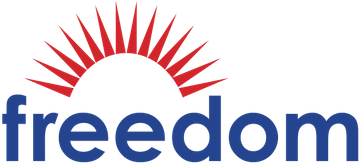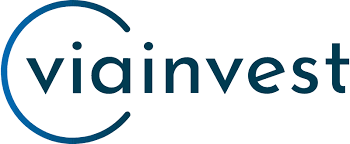DEBT HELP
How to Get Out of Debt with No Money and Bad Credit

Bankruptcy Pros and Cons: Don’t Declare Until You Read This
Being in debt can influence so many factors in your life, from whether or not you can afford a new car if yours breaks down or if you can qualify for a credit card.
Having bad credit can set you back from getting the jump you need to restore your financial health. If you’re working on how to pay off debt, first see how your credit score plays a role. Then browse through repayment plans to see which ones work for you. Not every plan is the right fit, so make sure you choose the one that makes sense for your money and lifestyle.
What is a “bad” credit score?
While there are many different credit scoring models, the most popular is your FICO score. A FICO score ranges from 300-850, with 850 being perfect.
| Score | Rating |
| 800-850 | Exceptional |
| 740-799 | Very Good |
| 670-739 | Good |
| 580-669 | Fair |
| 579 and below | Very poor |
A bad credit score can come from many different places:
- Missed payments. Your payment history makes up 35% of your FICO credit score. The more on-time payments you have, the better. But continuously paying bills late or flat-out missing payments can cause your score to plummet.
- High credit usage. How much you debt you owe compared to your credit limit, also known as your credit utilization ratio, makes up 30% of your credit score. If you’re constantly carrying high balances on your card or consistently coming close to maxing out your card, your credit score could be negatively affected — even if you pay off your balance every month.
- New credit. If you’re just starting out your credit journey, your score may be low. This is because you haven’t had an established credit history long enough to showcase your creditworthiness.
Having a bad credit score can disqualify you from buying a home, car, or getting a credit card. Sometimes, your low credit score could even prevent you from qualifying to rent a place to live.
Set up a repayment plan
If you’re trying to get your finances on the right track, you have a few different options to choose from. Make sure to review them all, since not every option is best for everyone.
Talk to your lenders
To get out of debt, you must acknowledge you have it; reaching out to your lenders is a good beginning. Whether it’s student loans or credit cards, it’s important to ask your lenders to work with you on a repayment plan that’s best for both of you. It shows you’re committed to working with them to pay back what you owe.
Before calling, review your budget to see what you can realistically afford to pay every month. When you call, have that number handy. It shows your lender you’ve done your research and you’re ready to start your journey to getting out of debt.
Ask about a hardship payment plan
Some credit card issuers may offer hardship payment plan for those who need some extra help. If you have many different credit cards and hold massive debt with them all, you’ll need to reach out to each of them individually to set up many different plans.
Hardship payment plans vary based on each lender, but they may offer a few different ways to lessen your burden, such as:
- Smaller minimum payments
- Lower fees or specific fee removal
- Lower interest rate
- Certain payment schedule
Negotiating a hardship plan is a good way to start paying back your debt. Talk to your lender about how participating in the plan could impact your credit score.
Ask for a raise
If you’ve cut your budget as far as you can and still need more cash to pay down debt, try increasing your earnings.
Asking for a raise may seem difficult, especially if you’ve never done it. Before meeting with your supervisor, review the last six months or year of your work history and find all the ways you’ve gone above and beyond in your work. Think about when you’ve stepped up to lead a project or help a team member when they were struggling. Consider the times you’ve stayed late or fixed a major issue that helped move the company forward.
After you’ve made your list of recent accomplishments, have a few numbers in mind. First, consider the dollar amount you’ll settle for. Then think about a higher number to tell your supervisor. That way, if your boss negotiates your potential raise down, you know where your stopping point is.
If you’re coming up short on recent accomplishments or you feel unhappy in your work, it might be time to start looking for a new job.
Use the debt avalanche or debt snowball method
Repayment plans come in many different forms. Sometimes finding the right one means taking a close look at how you view money. While the avalanche and snowball methods are similar in their approach, their focuses are different.
Survey: Have Debt? 30% of People Will Think Worse of You For It
The debt avalanche method prioritizes your debt with the highest interest rate or APR. To start, list all your debt by highest interest to lowest interest. Continue making the minimum payments on all your debts, but pay every extra dollar you can to the debt with the highest interest. You’ll do this every month until that high-interest debt is paid off completely, then move onto the next highest interest debt until all your debt is paid off.
The debt snowball method takes a similar approach, but instead of focusing on the highest interest, you’ll focus on your smallest debt first. Continue to make minimum payments on all your other debts, but pay as much as you can towards the smallest debt you have until it’s paid off. Then move towards the next smallest debt until all your debt is paid off.
Try the debt snowflake method
Both the debt avalanche and debt snowball methods require you to have extra money around to pay those debts — but finding extra money isn’t always possible. If that’s the case, consider the debt snowflake method.
This strategy takes very small amounts of extra money and puts it towards your debt in either the avalanche or snowball method. Maybe you made coffee at home and have an extra $5, or you saved $10 grocery shopping. Use these instances to make an extra payment on your debt while still making minimum payments on everything else.
The debt snowflake method uses many small savings to make debt payments. It may not be as fast as other repayment plans, but it could be useful if you don’t have the cash to spare.
Work with a debt consolidation company
How it works: Debt consolidation companies work on your behalf to combine all your outstanding debts into one manageable payment. You would pay a company every month and that company would pass along your payment to your creditors.
Pros: Many agencies give you the chance to get your debt in order by offering credit counseling and working on your behalf. If you’re unable to make significant changes on your own, a debt consolidation company can do the work for you.
Cons: You have to pay for this service. Some non-profit agencies offer help for a lower charge than other companies, but expect to pay fees in some capacity. You may also find that not every type of debt is suitable for these types of programs. Debt that is secured by collateral, such as your auto or home loan, may not be eligible.
Work with a debt settlement company
How it works: Instead of consolidating your debt, settlement looks to get your debt paid for less than you owe. A company would work on your behalf to negotiate settlements where you would pay less than your dues to settle the debt.
Pros: Paying less than what you owe is a great advantage. And settling the debt so it’s no longer looming over you is a big stress reliever.
Cons: Not paying the full amount you owe can have a negative impact on your credit score. It also remains on your credit report for up to seven years, which can hurt your chances of applying for new credit in the future. Debt settlement should be taken with extreme caution and only if you don’t have many other options available.
Consider bankruptcy as a last resort
How it works: Declaring bankruptcy has the chance to wipe out your debt that has been looming over you. If you declare Chapter 7 bankruptcy, this tells lenders you don’t have the funds available to repay your debts.
Pros: It gives you a fresh start. It removes many old debts you can’t afford, allowing you to concentrate on starting over with a new, more financially healthy life.
Cons: It causes your credit score to tank and can stay on your credit report for up to a decade. Not all debts are removed when you declare bankruptcy, so you may still be liable for major financial burdens even after your bankruptcy is complete. Bankruptcy may help free up some money for you but may cause more damage than you’re willing to accept. Carefully consider bankruptcy as a last resort if nothing else works.
Great for Over $20K in Debt
 Visit Freedom Debt Relief
Visit Freedom Debt Relief
Freedom Debt Relief Benefits
- Recommended for debts $27,000 and higher
- Resolve your debt in as little as 24 – 48 months
- They’ve helped save their clients over $10 billion
- Over 600,000 customers and counting
Visit Freedom Debt Relief
7 Things That Can Happen When You Live Debt-Free
Unmasking Online Deception: An In-Depth Social Catfish Review
Purple Garden Psychics – ($1/Min) FREE Trial Offers, Real Experience & Benefits And More

Refinancing an Auto Loan: How to Know If It’s a Good Idea

Reverse Mortgages Pros and Cons: Ripoff or a Good Idea?

8 Ways it Just Got Easier to Achieve Student Loan Forgiveness
Unmasking Online Deception: An In-Depth Social Catfish Review

Orchard Bank Credit Cards | NOT a Scam!

PrivacyGuard Review

How to choose where to study as an international student


